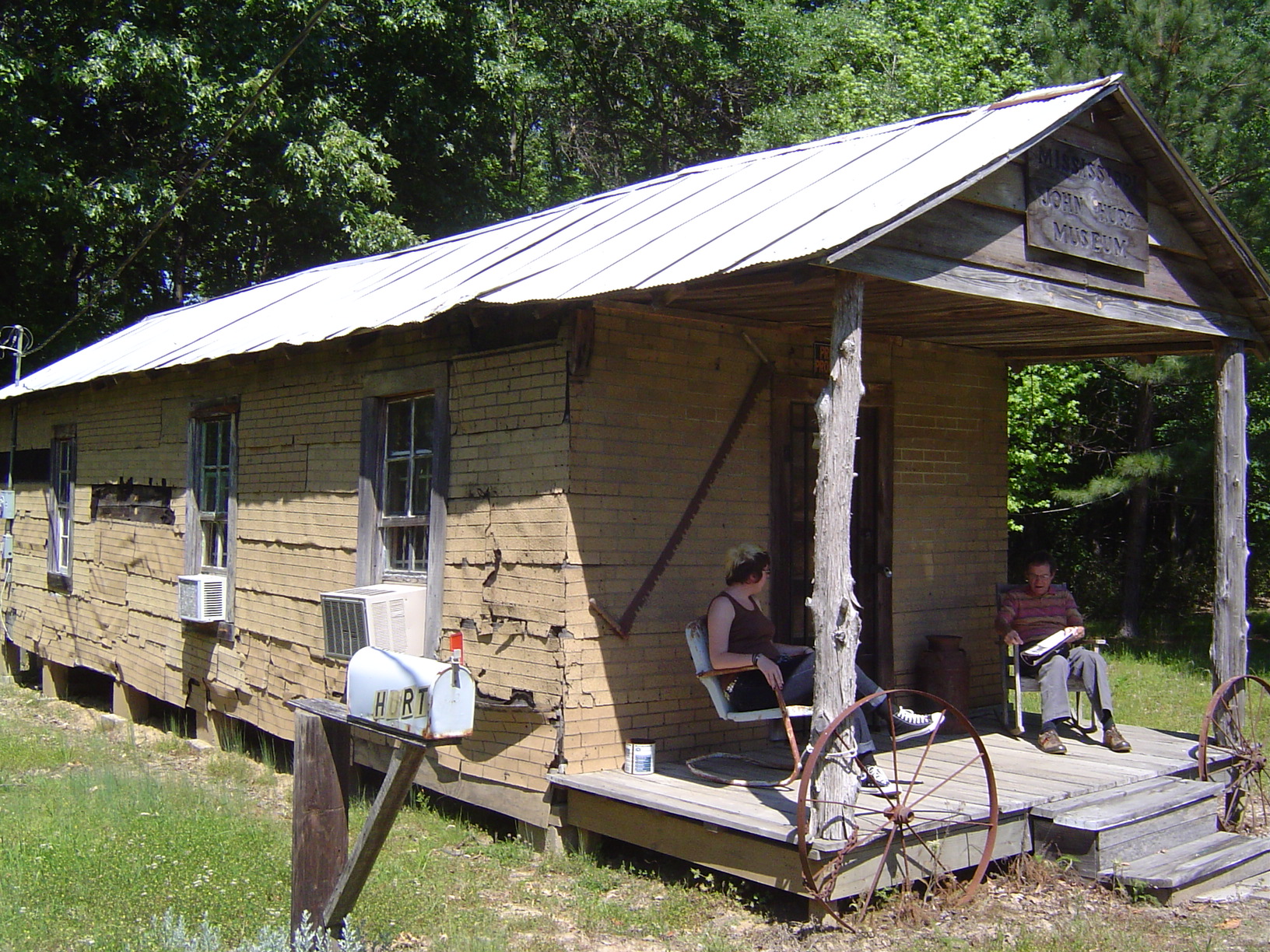- Music
- 08 Jul 24
Stevie Van Zandt and Derek Trucks among musicians contributing to effort to restore the Mississippi John Hurt Museum

Following a destructive fire in February, the Mississippi John Hurt Museum was lost entirely, reduced to mere ashes. Now, the guitarist’s granddaughter, Mary Hurt, is hoping to resurrect her grandfather’s legacy and rebuild the monument with a fundraising campaign to which several musicians and admirers alike have donated.
The Mississippi John Hurt Museum may have been housed inside the late bluesman’s childhood home - a 200 year old tin-roof shack - but for blues and American roots enthusiasts, it was sacred ground honouring one of the greatest musicians of the 20th century.
But now the building is reduced to ashes, burnt to the ground, following a fire earlier this year, mere hours after being listed in the US National Historic Register. It was a breathing testament to the blues legend, now lost forever along with hoards of irreplaceable memorabilia such as recordings, guitars and more.
 The original Mississippi John Hurt Museum in Avalon, MS. Copyright Matt Lancashire.
The original Mississippi John Hurt Museum in Avalon, MS. Copyright Matt Lancashire.Immediately after the disaster struck, Mary Frances Hurt, the artist’s granddaughter who is director of the non-profit Mississippi John Hurt Foundation and the primary curator of the museum, set up a GoFundMe Campaign. It was an ambitious undertaking: to re-establish a museum in honour of her grandfather on the same site. But the campaign has received several donations, bringing it closer to its $50,000 USD goal.
Among those who’ve contributed are longtime Springsteen E Street Band guitarist Stevie Van Zandt, Allman Brothers alum Derek Trucks and Melody Fahey, the wife of the late guitarist John Fahey. In a message to the foundation, Van Zandt writes: "John is an essential part of our history future generations need to know about.”
The cause of the fire was deemed non-suspect, but speaking to NPR in February, Mary Frances Hurt, John’s granddaughter, believes it to be a result of arson or foul play.
“I talked to the curator,” Mary Frances Hurt told NPR’s Neda Ulaby. “He called me with tears in his voice. He said that it’s a mess. It’s a devastating mess.”
With the loss of the museum, Hurt’s granddaughter remarked that an old church is the only material remnant of the area’s history as an all-Black town, which Hurt immortalised in his 1928 song ‘Avalon Blues’.
It’s nearly impossible to summarise Mississippi John Hurt’s influence on modern music of all genres, but especially blues, roots, folk, country music and rock ‘n’ roll. Moreover, his unique brand of syncopated guitar fingerpicking continues to inspire six-string savants and students everywhere.
Born in 1893, John Hurt grew up along the fringes of the Mississippi Delta in a town called Avalon where he taught himself guitar, developing his own unorthodox, left-handed finger-picking style. There he worked as a sharecropper and began playing at dances and parties.
Hurt first recorded music in New York City in the 1920s, but he didn’t achieve national recognition until his talents were rediscovered during the American folk revival in the ’60s. For those 35 years prior to his resurgence, he passed in obscurity, working as a sharecropper on a cotton plantation in Avalon, Mississippi (MS) and raising 14 children with his wife Jessie Lee. From 1963 until his death in 1966, he played at colleges, coffeehouses - including the legendary Gaslight Cafe in NYC - and before thousands of fans at the Newport Folk Festival.
Hurt’s work both evoked and diverged from his region’s musical traditions. “Classic” Delta blues music was “melodically complex, haunting and often discordant,” David Brown writes for Smithsonian magazine, and featured lyrics that described violence, infidelity and poverty. While Hurt shared that lyrical tradition, his music stylings departed from the Delta variant, drawing inspiration from several sources, including ragtime and medicine shows.
His blend of delicate, conversational lyricism and three-finger guitar stylings set him apart from peers, providing a touchstone for future generations of guitarists and musicians, from John Fahey and Doc Watson to Bob Dylan, Jerry Garcia and Gillian Welch.
The Mississippi John Hurt Museum was erected following the musician’s death. On the grounds of his childhood home, the museum was located on an unmarked dirt road and manned by a local caretaker who allowed entry to visitors who were able to reach him by phone. It became an official stop on the Mississippi Blues Trail and received an influx of visitors each Autumn during the Mississippi John Hurt Music Festival.
The recent devastation of John Hurt’s monument boasts a palpable - yet unfathomable in measure - loss to the music world, but Mary Frances Hurt is determined to keep the memory of her grandfather alive with the hopes of restoring the museum with a GoFundMe campaign.
Because the artifacts and other materials lost in the museum fire are irreplaceable, Hurt's legacy will need to take a new form,” Mary Hurt writes. “Part of this will include educational programs and events that honor Hurt's legacy and introduce his music to new audiences of all ages.
“This tragedy has accelerated our zeal and desire to preserve Hurt's legacy, and funds raised will go towards this effort. We invite you to join us in honoring the memory of Mississippi John Hurt and his contributions to music history.”
RELATED

- Music
- 25 Dec 25
WATCH: Bono, Imelda May & Glen Hansard lead Dublin Busk

- Music
- 25 Dec 25
Remembering Shane MacGowan: Revisit a Classic 1989 Interview

- Music
- 24 Dec 25







